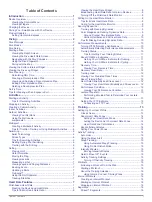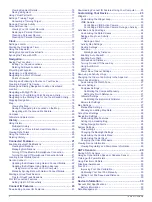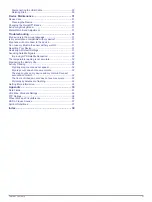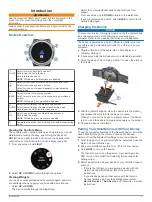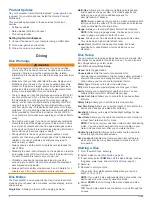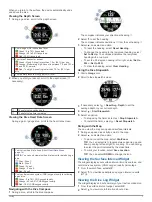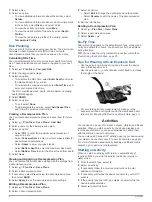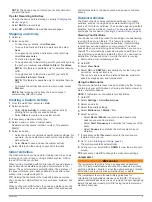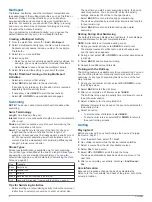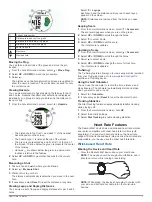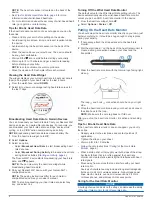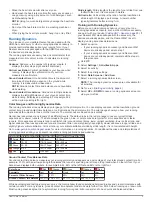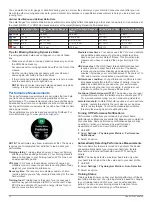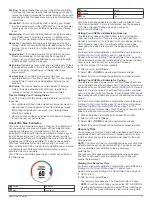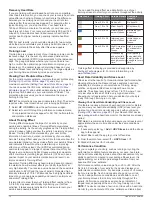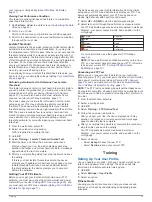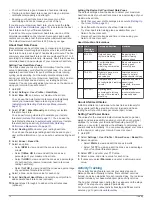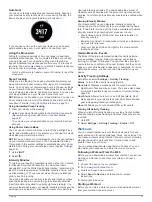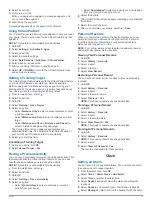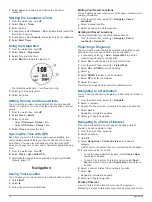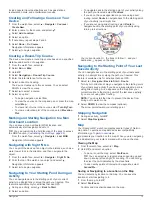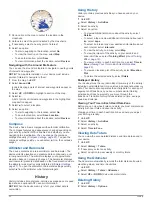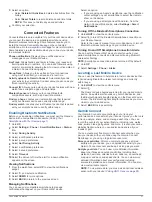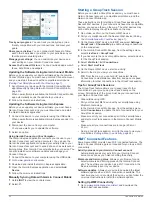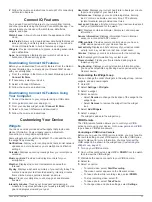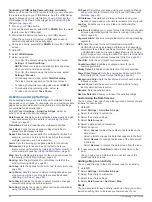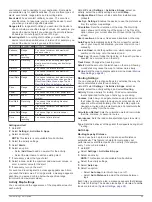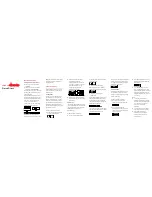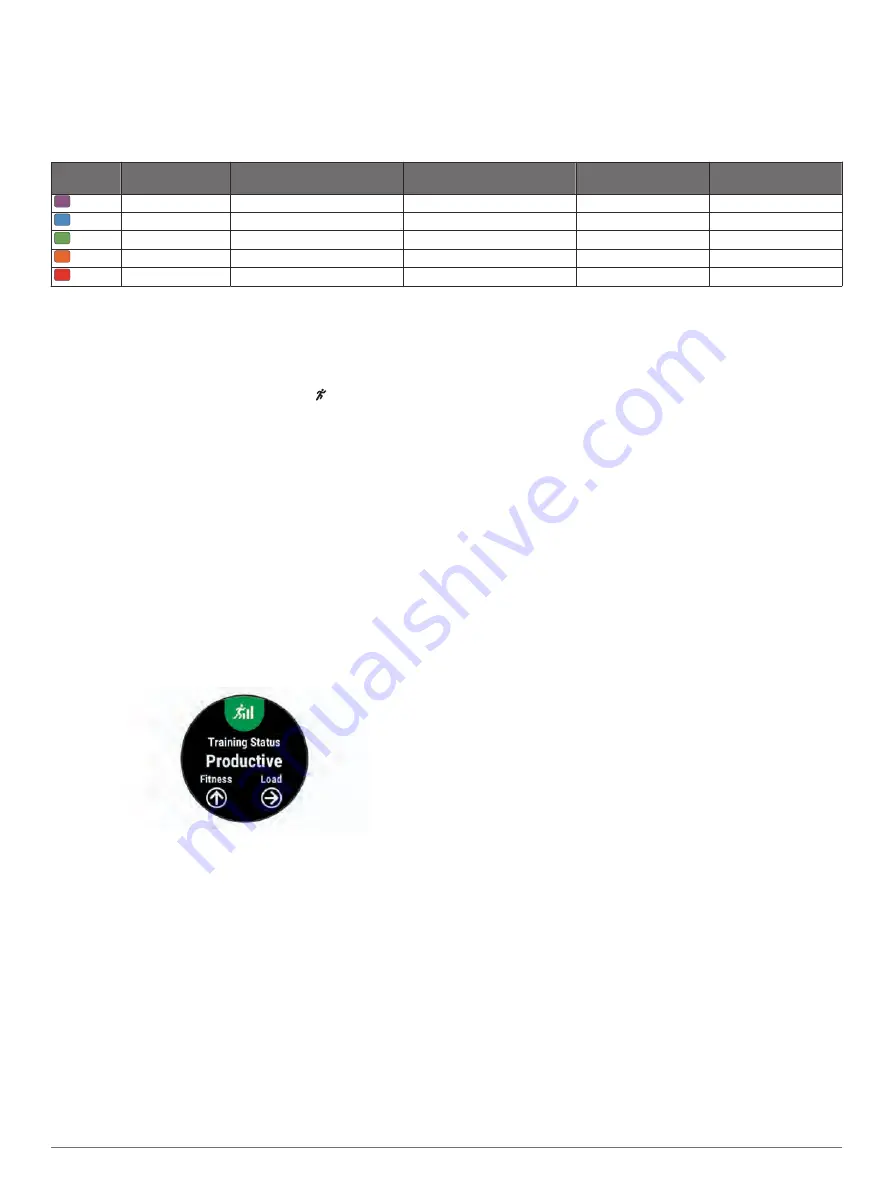
You can watch the color gauge or data field during your run or view the summary on your Garmin Connect account after your run.
As with the other running dynamics data, ground contact time balance is a quantitative measurement to help you learn about your
running form.
Vertical Oscillation and Vertical Ratio Data
The data ranges for vertical oscillation and vertical ratio are slightly different depending on the sensor and whether it is positioned at
the chest (HRM-Tri
™
or HRM-Run accessories) or at the waist (Running Dynamics Pod accessory).
Color Zone Percentile in Zone Vertical Oscillation Range at
Chest
Vertical Oscillation Range at
Waist
Vertical Ratio at Chest Vertical Ratio at Waist
Purple
>95
<6.4 cm
<6.8 cm
<6.1%
<6.5%
Blue
70–95
6.4–8.1 cm
6.8–8.9 cm
6.1–7.4%
6.5–8.3%
Green
30–69
8.2–9.7 cm
9.0–10.9 cm
7.5–8.6%
8.4–10.0%
Orange 5–29
9.8–11.5 cm
11.0–13.0 cm
8.7–10.1%
10.1–11.9%
Red
<5
>11.5 cm
>13.0 cm
>10.1%
>11.9%
Tips for Missing Running Dynamics Data
If running dynamics data does not appear, you can try these
tips.
• Make sure you have a running dynamics accessory, such as
the HRM-Run accessory.
Accessories with running dynamics have on the front of the
module.
• Pair the running dynamics accessory with your Descent
device again, according to the instructions.
• If the running dynamics data display shows only zeros, make
sure the accessory is worn right-side up.
NOTE:
Ground contact time and balance appears only while
running. It is not calculated while walking.
Performance Measurements
These performance measurements are estimates that can help
you track and understand your training activities and race
performances. The measurements require a few activities using
wrist-based heart rate or a compatible chest heart rate monitor.
Cycling performance measurements require a heart rate monitor
and a power meter.
These estimates are provided and supported by Firstbeat. For
more information, go to
NOTE:
The estimates may seem inaccurate at first. The device
requires you to complete a few activities to learn about your
performance.
Training status
: Training status shows you how your training
affects your fitness and performance. Your training status is
based on changes to your training load and VO2 max. over
an extended time period.
VO2 max.
: VO2 max. is the maximum volume of oxygen (in
milliliters) you can consume per minute per kilogram of body
weight at your maximum performance.
Recovery time
: The recovery time displays how much time
remains before you are fully recovered and ready for the next
hard workout.
Training load
: Training load is the sum of your excess post-
exercise oxygen consumption (EPOC) over the last 7 days.
EPOC is an estimate of how much energy it takes for your
body to recover after exercise.
Predicted race times
: Your device uses the VO2 max. estimate
and published data sources to provide a target race time
based on your current state of fitness. This projection also
presumes you have completed the proper training for the
race.
HRV stress test
: The HRV (heart rate variability) stress test
requires a Garmin chest heart rate monitor. The device
records your heart rate variability while standing still for 3
minutes. It provides your overall stress level. The scale is 1 to
100, and a lower score indicates a lower stress level.
Performance condition
: Your performance condition is a real-
time assessment after 6 to 20 minutes of activity. It can be
added as a data field so you can view your performance
condition during the rest of your activity. It compares your
real-time condition to your average fitness level.
Functional threshold power (FTP)
: The device uses your user
profile information from the initial setup to estimate your FTP.
For a more accurate rating, you can conduct a guided test.
Lactate threshold
: Lactate threshold requires a chest heart rate
monitor. Lactate threshold is the point where your muscles
start to rapidly fatigue. Your device measures your lactate
threshold level using heart rate data and pace.
Turning Off Performance Notifications
Performance notifications are turned on by default. Some
performance notifications are alerts that appear upon completion
of your activity. Some performance notifications appear during
an activity or when you achieve a new performance
measurement, such as a new VO2 max. estimate.
1
Hold
UP
.
2
Select
Settings
>
Physiological Metrics
>
Performance
Notifications
.
3
Select an option.
Automatically Detecting Performance Measurements
The Auto Detection feature is turned on by default. The device
can automatically detect your maximum heart rate, lactate
threshold, and functional threshold power (FTP) during an
activity.
NOTE:
The device detects a maximum heart rate only when
your heart rate is higher than the value set in your user profile.
1
Hold
UP
.
2
Select
Settings
>
Physiological Metrics
>
Auto Detection
.
3
Select an option.
Training Status
Training status shows you how your training affects your fitness
level and performance. Your training status is based on changes
to your training load and VO2 max. over an extended time
period. You can use your training status to help plan future
training and continue improving your fitness level.
10
Heart Rate Features
Summary of Contents for IPH-A3095
Page 1: ...DESCENT MK1 Owner sManual...
Page 6: ......
Page 46: ...support garmin com November 2017 190 02244 00_0A...


